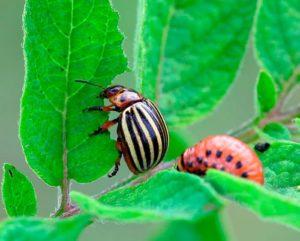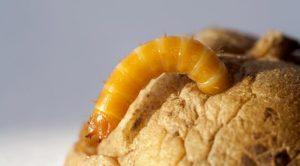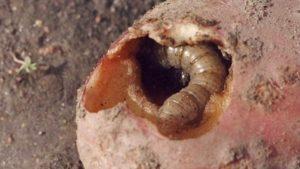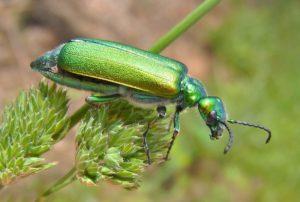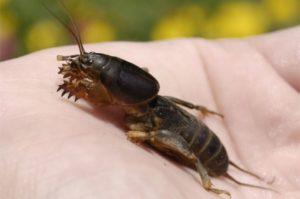Potato pests: 10 insects on fruits and tops
Potato is one of the most common crops. Tubers are grown everywhere, and the variety of varieties is amazing. But the variety of pests that feed on tubers or greens is quite considerable.
Content
What are potato pests
There are some specific pests that have a narrow "specialization". The appearance of insects is always the cause of a decrease in yield. They fly to landings, are brought to the site with equipment and can live in the ground for years.
potato pests
All insects cause damage to plantings and significantly reduce the yield. Let's get acquainted with some famous representatives of insects that infect potatoes.
Colorado beetle
This pest takes a well-deserved first place. Both the beetle itself and its mobile caterpillar larvae eat green tops and flowers. They cause harm from all sides:
- Larvae and beetles eat a lot.
- They attack as a family, eggs are laid on the back of the leaves.
- Easy to move over long distances.
- They hibernate in the ground, are not afraid of cold weather, wind and rain.
- Pests eat greens so much that the processes of photosynthesis and nutrition are disrupted, which is why tubers simply do not form.
How to remove the Colorado potato beetle
With a massive accumulation of insects, a number of procedures must be carried out. Helps preserve potatoes:
- observance of crop rotation, alternation of crops;
- proper planting of plants - do not plant next to nightshade;
- loosen the soil, mulch the aisles;
- carry out manual collection of larvae and beetles;
- apply biological products: Entocid, Bitoxibacillin, Boverin, Aktofit and others.
wireworm
Wireworms are the larvae of click beetles. They are very fond of creeping wheatgrass and other weeds. Potato planted near meadows and pastures, in the risk zone.
In the first half of the summer, these long caterpillars damage the roots, and in the second they do more damage - they pierce the tubers, gnaw them inside. Damage adversely affects the condition of the tubers, and also contributes to the penetration of spores of the fungus and viruses.
You need to fight in a complex way:
- Observe crop rotation.
- Destroy weeds.
- Treat seed potatoes.
Maybug
The beetle itself does not harm, but its larvae are very thick and voracious. They eat tubers quickly, eat away the middle, which causes the tubers to dry, turn yellow and wither.
Prevention of the appearance of larvae of the grub is:
- timely loosening of the soil;
- collection of larvae by hand;
- planting nearby turnips, radishes;
- bird bait.
Biological products will help to destroy the Maybug: Metarizin, Entocid or Boverin. They are introduced, observing the dosage, into moist soil in those places where the larvae were seen.
Potato moth
Potato miner moth is a quarantine pest. It spreads very rapidly and under good conditions can destroy from 60% of the crop.

Potato moth.
Infection occurs in several ways:
- active flight of butterflies;
- violation of storage requirements;
- from other nightshades.
If pests are brought into the storage, seed potatoes can be completely spoiled.
Large potato aphid
This and several other species, beet, peach and bean aphids, can significantly spoil the potato crop. Due to the impact of aphids, the tops of potatoes wither, the leaves curl.
Additional harm from aphids lies in the fact that by its activity it transfers the infection from one plant to another.
Aphids live openly, on the top and bottom of the shoots. The insect lives in a colony, multiplies rapidly and causes enough damage.
Scoops
Gnawing scoop species cause a lot of harm in central Russia to various plantings, including potatoes. Caterpillars hibernate in the ground, and when warming begins to pupate. They feed on roots and fruits.
Their life activity is harmful:
- the larvae make thin passages in the fruits;
- recesses are eaten inside the tuber;
- fill them with excrement;
- gnaw the flesh of the stems near the ground.
Prevention and folk methods are the best ways to protect potatoes from biting and potato scoops.
spotted potato ladybug
This is an insect that on average looks like a cross between a ladybug and a Colorado potato beetle. The main harm that it causes is the skeletonization of potato leaves. Moreover, the fluffy larva begins its vital activity immediately after germination. Up to 10 larvae can settle on bushes. Each female lays up to 500 eggs on the back of the leaf, from which voracious insects hatch.
Cicadas
Insects feed on plant sap, which causes the leaves and shoots to lose color, twist, and carry out less respiration and photosynthesis processes. In addition, leafhoppers carry a number of viral diseases.
Shpanki
Spanka beetles, they are also Spanish flies, small black or green bugs. In the warm season they eat young shoots and flowers. Insects are unpretentious, so the whole garden and garden suffer from this pest.
They have features:
- in flight, they emit an unpleasant odor;
- secrete cantharidin, a toxic substance that, when it comes into contact with human skin, causes abscesses;
- at night they are inactive, it is very convenient to fight with them.
Medvedka
This insect is a terrible dream of gardeners. It is ubiquitous, but it is difficult to destroy, due to the fact that it lives deep underground. Medvedka affects all underground parts of plants, roots and tubers.
Bushes slow down growth and development, and tubers can completely deteriorate. She sometimes even eats them through, the damaged parts are not stored, they are affected by fungal diseases and infections.
How to protect potatoes from pests
Not only people love potatoes. Many pests attack greens and tubers. To protect plantings from them, you need to know a few rules and requirements of agricultural technology.
- Observe crop rotation, swap crops and make sure not to plant crops nearby that are affected by the same pests.
- In autumn, dig and remove weeds, debris and carrion.
- In the spring, properly prepare the soil before planting.
- Treat potatoes before planting.
- As it grows, carry out folk methods of protection, hill up beds and weed weeds.
- In case of severe infection, use chemicals, but strictly following safety precautions and instructions.
Conclusion
Potatoes are a tasty morsel for various pests. Many attack it - lovers of juicy greens, appetizing tops and fruits. Therefore, it is necessary to protect the planting comprehensively, and start with agricultural technology.
Previous